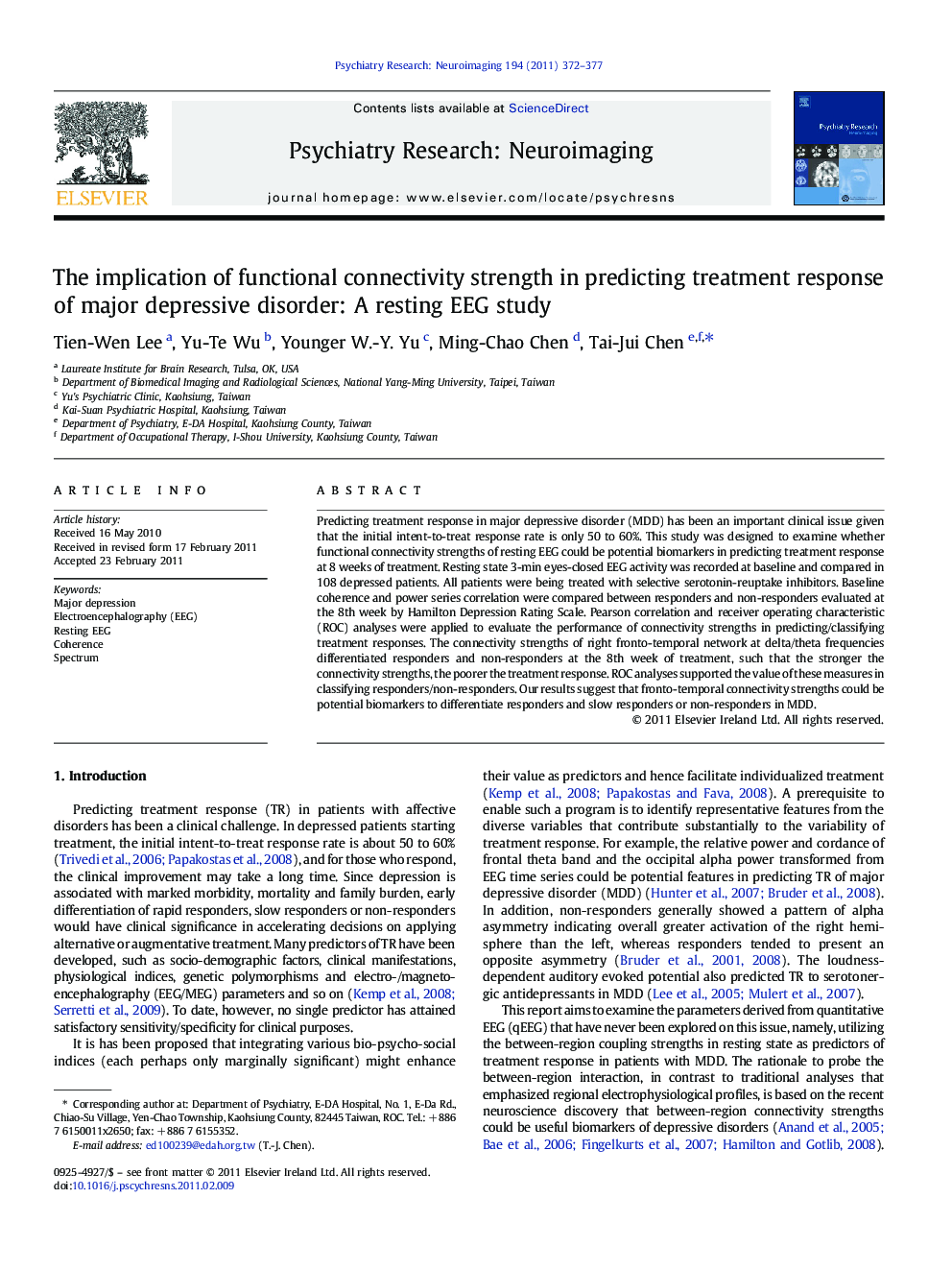| کد مقاله | کد نشریه | سال انتشار | مقاله انگلیسی | نسخه تمام متن |
|---|---|---|---|---|
| 334513 | 546565 | 2011 | 6 صفحه PDF | دانلود رایگان |

Predicting treatment response in major depressive disorder (MDD) has been an important clinical issue given that the initial intent-to-treat response rate is only 50 to 60%. This study was designed to examine whether functional connectivity strengths of resting EEG could be potential biomarkers in predicting treatment response at 8 weeks of treatment. Resting state 3-min eyes-closed EEG activity was recorded at baseline and compared in 108 depressed patients. All patients were being treated with selective serotonin-reuptake inhibitors. Baseline coherence and power series correlation were compared between responders and non-responders evaluated at the 8th week by Hamilton Depression Rating Scale. Pearson correlation and receiver operating characteristic (ROC) analyses were applied to evaluate the performance of connectivity strengths in predicting/classifying treatment responses. The connectivity strengths of right fronto-temporal network at delta/theta frequencies differentiated responders and non-responders at the 8th week of treatment, such that the stronger the connectivity strengths, the poorer the treatment response. ROC analyses supported the value of these measures in classifying responders/non-responders. Our results suggest that fronto-temporal connectivity strengths could be potential biomarkers to differentiate responders and slow responders or non-responders in MDD.
Journal: Psychiatry Research: Neuroimaging - Volume 194, Issue 3, 30 December 2011, Pages 372–377